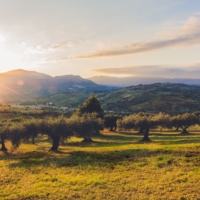 Photo credit: Canva
Photo credit: Canva
In 2015 world leaders adopted the UN’s 2030 Agenda, which for the first time sets out a new framework for sustainable global development with 17 Sustainable Development Goals (SDGs)[1]. One of the most important of these goals is to protect our planet, promoted by sustainable production and consumption models. How does the natural and organic cosmetics sector contribute to this goal? How can cosmetics manufacturers continue to support the transition to a more circular and sustainable industry?
Sustainability in our DNA
Sustainability means taking social, environmental and economic factors into account throughout the entire production chain in order to achieve a consistently positive effect. When it comes to natural cosmetics, sustainability does not only refer to the way ingredients are sourced or how the product is produced, but also to the materials used during its production and post-production.
This sustainable ·inside and out” holistic approach is an essential part of the NATRUE Label criteria, which is in line with the sustainable actions and strategies carried out by brands whose products are NATRUE certified. Indeed, for many of these cosmetic brands, sustainability has been part of their DNA since their creation, and they greatly contribute to the transition towards the use of more sustainable ingredients and materials for the production of natural and organic cosmetics.
Sustainable and biodegradable: the ideal cosmetics product
From product formulation via the production of ingredients through to post-consumer processes such as the disposal of packaging and the biodegradability of ingredients, natural and organic products carrying the NATRUE label are certified according to strict criteria centred around a sustainable approach to both production, formulation, and impact.
As in other industries, the biodegradability of ingredients is becoming increasingly important in the cosmetics sector. Substances conventionally used in cosmetics such as microplastics are being replaced by innovative alternatives that are environmentally friendly. The tiny particles (smaller than 5mm) play a variety of roles – in skin care products they provide exfoliation; in oral hygiene products they polish the teeth. Due to their microscopic size they can pass through the filters of water treatment plants and end up in the ocean.
To protect marine ecosystems many cosmetics brands are working to reduce or completely avoid the use of microplastics in their products. They are replacing them with natural alternatives such as inorganic minerals like quartz sand or plant products like cellulose particles, crushed seeds and fruit peel. The NATRUE criteria allow only ingredients that are classified as natural, derived-natural or identical to nature. Since microplastics are mostly produced from mineral oils, they are already by definition banned in NATRUE–certified products.
Upcycling ingredients: too good to bin
According to a 2011 study by the Swedish Institute for Food and Biotechnology, around a third of the food produced every year for human consumption gets lost or is thrown away. That equates to a loss of 1.3 billion tonnes of food every year. Yet food waste can be a valuable source of raw materials for the production of natural and organic cosmetics.
Food manufacturers and cosmetics companies are working together in a joint effort to recycle valuable materials in the production cycle. Some suppliers are even specialising in organic food waste material created during the food production process. This material – olive oil, orange and lemon peel, coffee and cacao beans and tea leaves – is being put to use in novel ways in natural and organic cosmetics. Even dried fruit seeds, a by-product of juice and jam production, are too good to throw away. They can produce valuable cold-pressed oils for natural and organic cosmetic products. New possibilities are emerging all the time.
Redesigning cosmetics packaging
Until recently, fossil fuels and their derivatives such as plastic were the most important source in the production of materials for the things we use every day. Yet their damaging effect on the world’s environment and climate means they are coming under increasing public criticism. For this reason, the NATRUE label demands that product packaging meets a number of specific requirements: the use of halogenated plastics is prohibited whereas the use of recyclable and renewable materials is promoted for primary and secondary packaging, as well as a reduction in packaging generally.
In recent years there has also been a clear trend towards reducing or even eliminating packaging, both at the primary and secondary packaging level.
It’s important to find alternative packaging materials to plastic. But what about the untold amount of plastic packaging that is already out there? And what about the organic and inorganic waste that we produce? To make a real and long-lasting change to packaging materials, NATRUE is a participant in the EU-funded URBIOFIN project. The project’s most important goal is the conversion of solid urban waste into environmentally sustainable packaging. For example, the NATRUE Brussels office has contributed to the URBIOFIN project by engaging NATRUE members to provide input for the development of innovative packaging for cosmetics.
Responsible and mindful consumers: the role our customers play
Consumers play a very decisive role in the development of reusable and recyclable products because their demand for these products shapes the actions of the cosmetics industry. The NATRUE label is built on growing customer awareness of, and demand for, sustainability: It makes it easy to identify at a glance organic and natural cosmetics that fulfil strict criteria requirements concerning production, formulation, biodegradability and packaging.
Each purchasing decision contributes to the global ecological footprint of the cosmetics industry, which is why it’s worthwhile supporting brands and products that put the protection and future of our planet high up on their to-do list.
[1] The 17 Sustainable Development Goals (SDGs) are the world’s best plan to build a better world for people and our planet by 2030. For more Information, see the United Nations website.

Article written by Dr. Mark Smith, NATRUE’s Director General, and originally published on WALA’s website (find it here.)



 Deutsch
Deutsch
 English
English
 Français
Français
 Italiano
Italiano